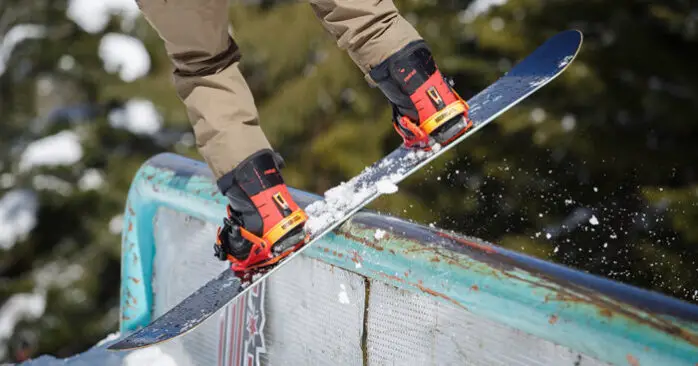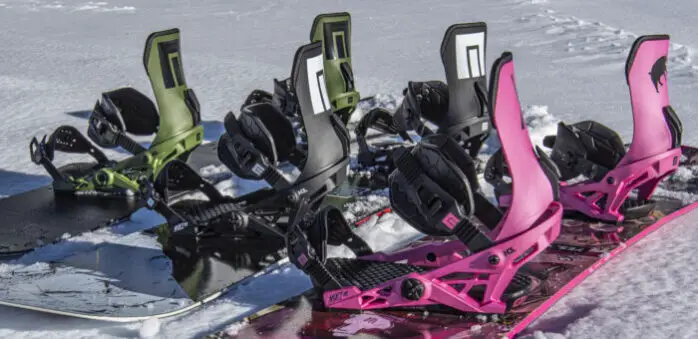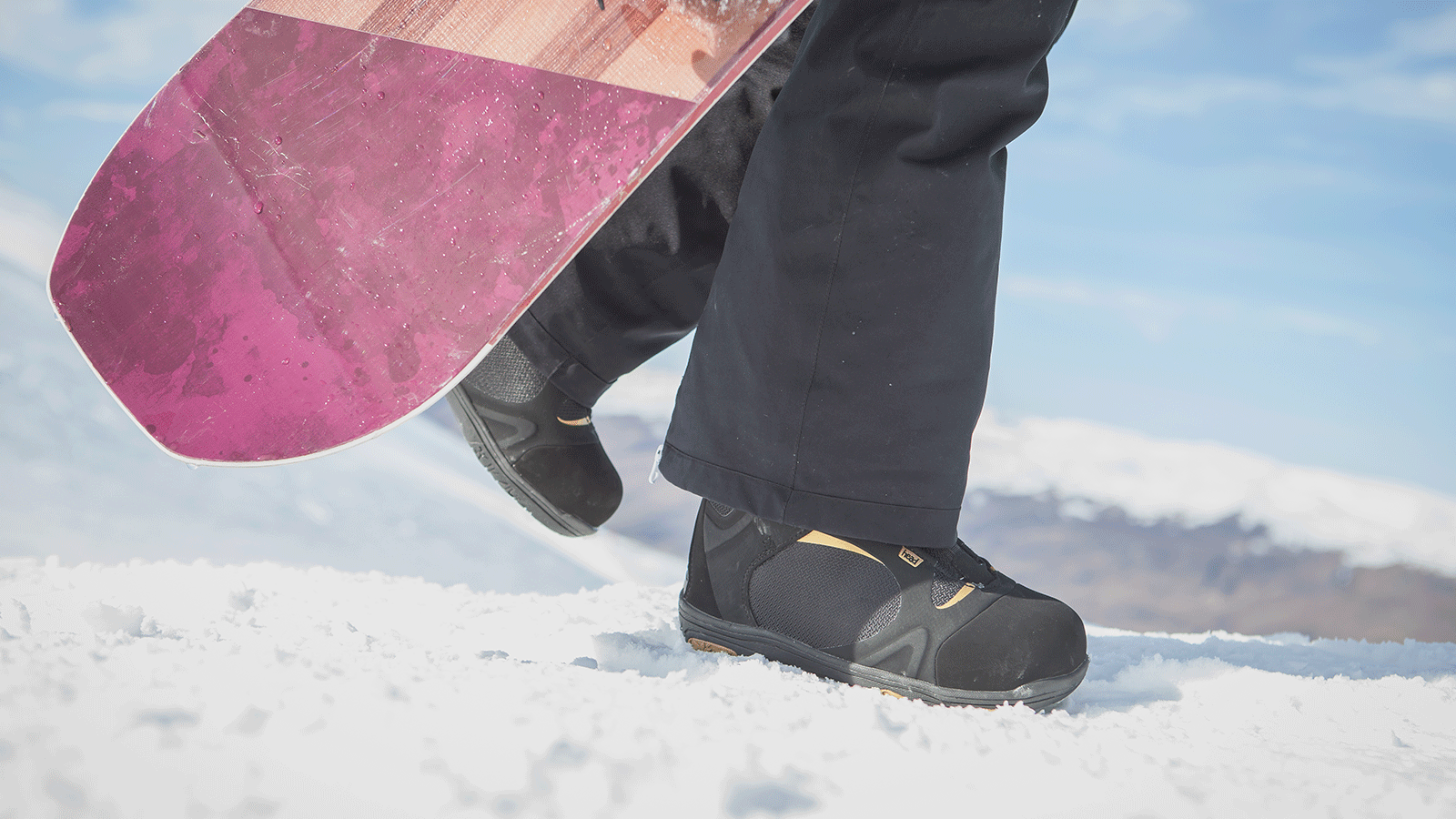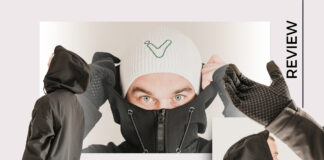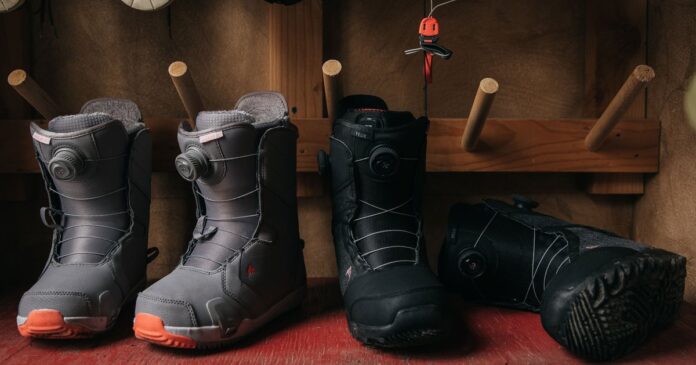
The way the Snowboard Boot Fits, holds, and supports your feet and ankles are the most important basis in Selecting Snowboard Boots. Boots transfer energy from your feet, to your bindings, and then to your board. If the Snowboard Boots you’re using are too large, you will have to work certain leg muscles extra hard, which may result to crams and fatigue. To avoid this, it is crucial that you get the Right Snowboard Boots Fit from the start.
For the Best Fit, shop when your feet is at their largest – in the afternoon, evening, or after a physical activity. Remember, your feet can swell up to a half-size while snowboarding, so it’s important that you size to fit them at their largest. To try on Snowboard Boots follow these steps:
Put on Snowboarding Socks or at least the thick socks that you would wear when you’ll go Snowboarding. Do not try your Boots with regular socks. You might think it’s irrelevant, but the added thickness of the socks matter a lot when it comes to the size and fit of your Snowboard Boots.
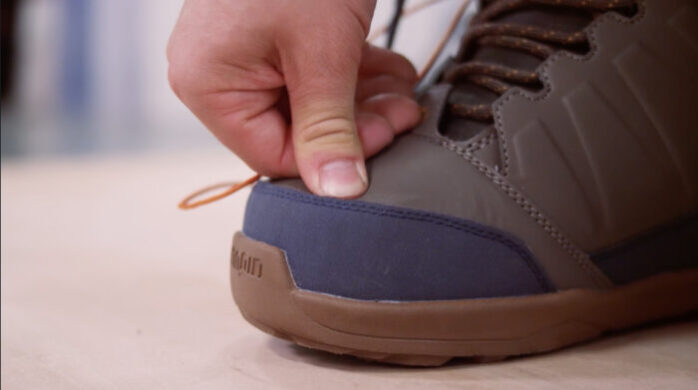
Still, some people have strange misconceptions about socks. One of which is that you have to wear more than one pair of socks. This is certainly wrong since Snowboard Boots should fit snugly. It is all right if toes are grazing the ends of your boots, but make sure they aren’t jammed. After all, when the boots break in a little they will feel more comfortable.
Loosen the outer (and inner if available) laces of the Snowboard Boot and insert your foot. Make sure the heel of your foot is locked in the heel of the boot.
Tighten the inner lacing first (again if available). Make it pretty tight but make sure your feet can still breathe and you don’t cut off circulation. Next, tighten the outer lacing, again pretty tight, without killing your feet.
Walk around a bit and get a feeling for how well the Snowboard Boots are strapped around your feet. Make sure you don’t feel any isolated, painful or stressful areas.
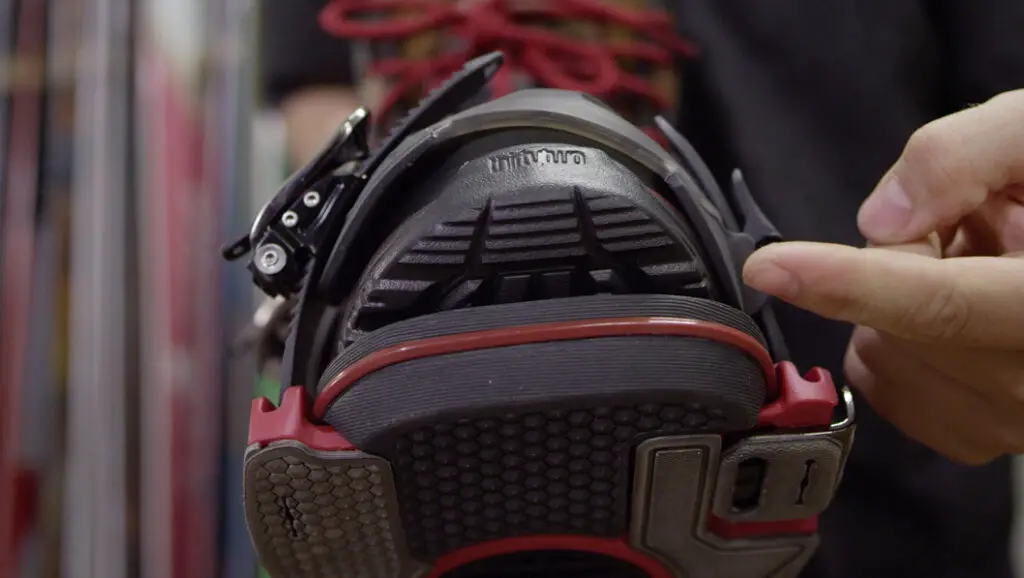
Now the most important test: strap into (or step into) a binding attached to a snowboard. Take on a riding position and move your weight to the front and the back of the board. Be sure the boots are securely keeping your feet on their place. Also, make certain that they are not slipping to the back or front, and that you are not experiencing painful or stressful areas on your feet. The Snowboarding Boots should make you feel both comfortable and securely strapped-in at the same time.
Lean forward. When you do this, make sure that your heel is not lifted, but that the entire boot, binding and board are making the forward move without your heel slipping out of the heel of the Snowboard Boot. If you do experience heel lift, your boot tech can add some fit aids like an Eliminator Tongue to reduce volume and increase responsiveness. This will also ensure that your heel is not slipping out of the boot.
When you try on Snowboarding Boots, take into account that as you use the boots more often, the inner bladder will get less compact because of the pressure that the bladder will be exposed to. Consequently, the Snowboard boots will become less tight as you use it more. Try to anticipate this trend by buying boots that are slightly tight. After the boots break in a little they will feel a lot better.
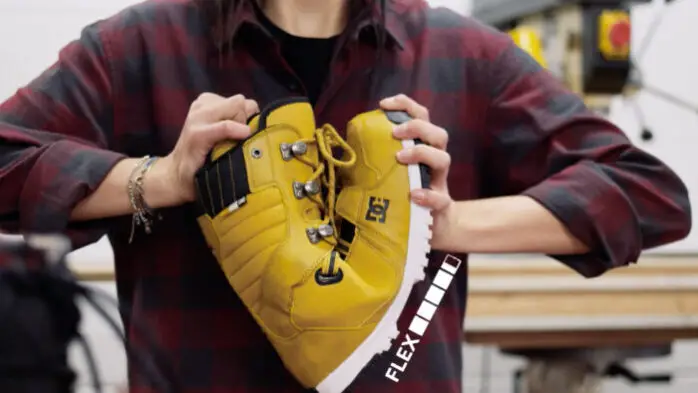
Snowboard Boots come in all regular shoe sizes. Still, keep track of how different boots of similar sizes can vary in the way they hold your feet and ankles. Don’t Buy Snowboard Boots because the internet or your friend says its cool, or your favorite rider has his/her name on it. What may feel good to one person may be excruciatingly painful to someone else.
Make sure to try on many boots and only buy one that you are 100% sure of. Quality Snowboard Boots can last long, so you will want to put in more time and spend some money on this. Regardless of the Type of Snowboard Boots you intend to wear, choose the pair that fit your feet best. After all, you wouldn’t want to be out of control and in pain when you ride down the slopes.

